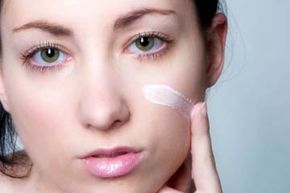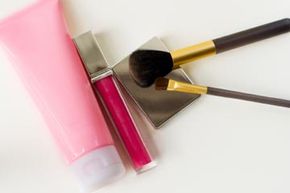Click! You and your friends eagerly gather around the camera to see the group shot you took. It's been a great evening together, and you're happy to capture the moment. But wait, why is your face so shiny? It's not the healthy, dewy look like everyone else has; your face looks like an oil slick hit it. Even though you use powder and other oil-control products, you can't seem to get rid of your skin's oily appearance, and you've got a camera full of pictures to prove it.
Advertisement
This condition is not out of the ordinary. If you're one of the many people afflicted by oily or combination skin, you may have a tough time combating the oil so that it doesn't become the prominent feature on your face. This oil is called sebum, a substance produced by the sebaceous glands, and its main function is to lubricate the skin and hair. Oily skin is a result of an overproduction of sebum caused by any number of factors, including hormones, bacteria, medications and heredity [source: Mayo Clinic]. Oily skin can occur all over your face, or along what's often referred to as the "t-zone," a t-shaped area that runs across the forehead and down the nose and chin.
Acne medication and special facial washes can help fight oily skin, but sometimes the sebaceous glands are so active that within a couple hours of washing, your face might have excessive oil on it again. To fight oily skin throughout the day, a mattifier can help control sebum without you needing a prescription from a dermatologist. One such mattifier is a mattifying lotion, a product with distinct ingredients that's formulated to soak up sebum. When you apply the lotion on your face, it works to absorb the oils and give skin an overall matte appearance.
What beneficial properties do these lotions have, and how do they control skin oils so effectively? On the next page we'll get into the chemistry behind the lotion.
Advertisement

